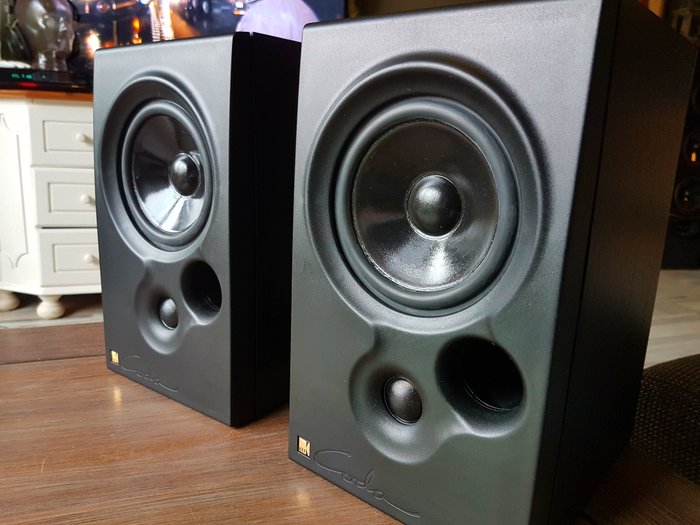Unlike with audio interfaces, you don’t really have to understand the internet to effectively use it. After all, there are 5.3 billion users as of August 2023, meaning roughly 65% of the world uses the internet. Most people can’t tell the difference between optic and coaxial cables. Most of them aren’t even using cable to get internet (they’re using Wi-Fi).
Still, understanding these peculiarities and differences may help you in your decision-making process.
This doesn’t have to affect just you as an individual. You may decide to get a new internet package for your office. This decision will affect your corporate productivity, a major cost of doing business, and may even require extensive work on the office floor.
To be more prepared to make these decisions, here’s how cable quality can affect your internet performance.
Types of cables
There are many types of internet cable, each of which significantly affects the internet performance.
Ethernet cable
This is probably the most common cable, often described as LAN cable. The thing is that ethernet cable comes in various categories:
- Cat 5e
- Cat 6
- Cat 6a
- Cat 7
- Cat 8
Each of these cable categories comes with a different speed and performance. For instance, while Cat 5e can support speeds up to 1Gbps, Cat 8 can support speeds up to 40Gbps.
Ethernet cables are usually used to get the internet from the router to the device in question. Up to the router, the internet is often delivered through a coaxial or DSL cable.
Coaxial cable
A lot of people get their internet from their cable TV provider. This means that the provider uses, more or less, the same infrastructure to deliver the internet. In this scenario, we’re usually talking about coaxial cables.
These cables provide higher-speed data transmission than DSL, are more reliable, and have a broad coverage. One of their downsides is that the performance drops during peak since everyone is online or watching TV simultaneously.
Fiber optic cable
Let’s be completely honest and acknowledge that this is, beyond doubt, the best option on the market. The only reason why everyone is already not using optic internet is because it’s not available everywhere.
You see, DSL and cable internet are distributed through the existing infrastructure. Even in rural areas, in 2023, everyone will have access to a functioning phone line or cable TV.
Fiber internet is a whole new thing.
In other words, fiber optic cable for the home network is an option that you should definitely take when available.
These cables provide high data transfer rates, have the lowest latency and high bandwidth, and are made to be immune to electromagnetic interference.
As these cables become more available, you’ll see more and more households making a switch.
DSL
The digital subscriber line uses telephone lines to deliver internet. This is simple equipment yet relatively sturdy and reliable. It’s widespread and available almost everywhere, so it’s one of the most popular internet options, even in an era with many better options.
Keep in mind that there are different DSL variants like:
- ADSL
- VDSL
- DSL2
- DSL2+
- Symmetric DSL
Overall, this technology has some distance limitations, which means that the further the customer is from the central office, the slower their internet might be. This is quite different from the previously discussed fiber optic cable, which is designed for long distances.
USB tethering cable
You already know that you can use a device with access to the internet as an internet hotspot, spreading it to other devices. You don’t have to use Wi-Fi, but you can use a USB cable instead.
Cable materials
The material that the cable is made of usually determines its resilience, capabilities, and even the quality of connection. It’s important to understand that no cable is made from a single material. Each has conductors made from copper or aluminum and insulation made from materials like PVC, shielding, and jacket material.
Unlike coaxial and DSL cables, the fiber cables’ core is usually made of plastic. The rest is fairly standard; you have the coating, the outer jacket, etc.
You need to keep in mind the importance of these materials’ physical properties on the conductivity, resistance to interference, and, ultimately, cost.
As an end user, you may believe that the cost of the material doesn’t affect you, but this is a naive way of looking at things. The provider usually passes the cost down to the consumer. This means that just because you don’t realize that you’re paying the price doesn’t mean you’re not doing so.
Additional factors
The older the cable gets, the more worn out it is. Now, while these cables are made from durable alloys and have proper protection, they’re not impervious to the effects of aging.
Previously, we’ve discussed age as a determining factor. Well, it’s not the only thing out there. Just imagine an ordinary cable in an office. A year in an office can be completely different if it’s in the middle of a traffic-heavy hallway or tucked away somewhere in the corner (potentially even going through the wall).
Just remember that when it comes to this sort of infrastructure, it’s not the foot traffic from which the damage is coming but the environmental factors. Wind, rain, extreme temperature changes, hail, and some other factors are just some of the things that will put these cables under strain.
Also, remember that a part of the cable is on your property. How you treat it will determine the state that it’s in. It’s up to you to organize it, and in this particular scenario, trample damage is a significant factor.
Wrap up
In the end, not only does the cable quality affect internet performance, but the type of cable used determines the type of internet that you have available. This determines maximum speed, resilience to all sorts of occurrences, and even internet fluctuation during peak hours. Overall, understanding what you’re signing up for can ensure you make a good decision instead of a bad one. This is an invaluable skill in 2023.





